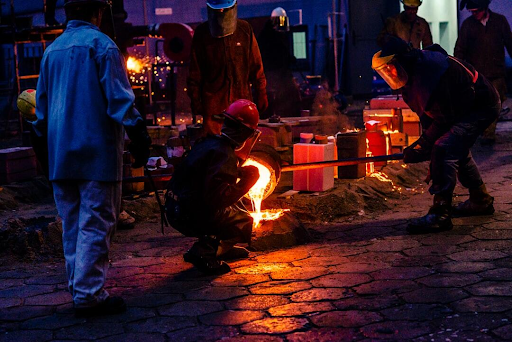Exploring Different Types of Casting: Which One is Right for You?
Casting is an amazing process; it shapes materials into useful forms. But did you know there are different types of casting? Each one has its purpose and method.
Understanding the basics of casting can help you choose the right type. What if you need to create a strong part of a detailed object? Let’s explore the types of casting and find out what works best for you.
Sand Casting: Simple and Versatile
Sand casting is one of the oldest casting methods; it uses sand molds to shape materials like metal. This process is great for making large and heavy objects. Many car parts and tools are made using sand casting and you can even use it for unique designs.
Though the surface may need extra finishing, it works well. Sand casting shows how simple materials can create strong items. This method is often the starting point for learning the basics of casting.
Die Casting: Smooth and Detailed
Die casting is perfect for making items with fine details. It uses high pressure to force the metal into molds. This creates smooth surfaces and precise shapes.
Think of car engines or small gadgets-these often use die-casting. It works best with metals like aluminum or zinc.
Die casting shows how technology improves the casting process. If you need something strong and detailed, this could be the answer.
Investment Casting: Intricate and Accurate
Investment casting is also called lost-wax casting. It creates very detailed parts with high accuracy. Artists and industries both love this method.
Jewelry and airplane parts often use investment casting. It works by making a wax model and covering it with a ceramic shell.
The wax melts, leaving space for the metal. This type of casting highlights the beauty of casting art. It’s great when you need intricate shapes.
Materials like 304 stainless steel casting are often used to ensure strength and durability in intricate designs. This method allows for complex geometries, making it ideal for decorative and functional purposes in various industries.
Continuous Casting: Efficient and Consistent
Continuous casting is great for producing long, uniform pieces. It’s often used for making steel, copper, or aluminum products. The process involves pouring liquid metal into a mold that cools it quickly.
This method reduces waste and saves time. Pipes, rods, and sheets are often made with continuous casting. It’s a clever way to meet high production demands.
The high precision of this method makes it ideal for industries needing consistent quality. Continuous casting also minimizes material loss, making it cost-effective for large-scale production.
Discover the Basics of Casting Right for You
Casting is a mix of science and creativity. Learning the basics of casting helps you understand its many possibilities. From sand molds to intricate casting art, each method has value.
Choosing the right type depends on what you need to create. Whether it’s a sturdy tool or a detailed design, casting makes it possible.
Explore these methods and discover the art of shaping materials. Which type of casting will you try next?
Did you find this article helpful? If so, check out the rest of our site for more informative content.






